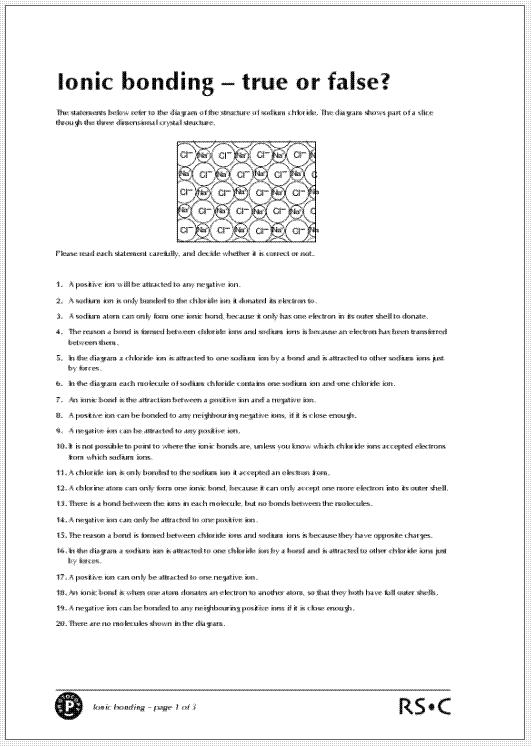One of my all time favourite resources from the RSC is
Keith Taber’s Chemical Misconceptions: Prevention, Diagnosis and Cure. It’s the one RSC resource I think I use more than any other. As it’s a resource I’m going to have to mention time and again here, I better start early so I don’t repeat myself too often.
CMDPC comes in two volumes. In the first,
Keith explores the pedagogical minefield of chemistry, its origins and implications as well as some strategies for navigating it. The second is a little easier to pick up and run with because it has lots of resources ready to go whose value is immediately obvious.

The first one I want to highlight is one of the bonding
true-or-false resources which seems topical given Keith’s recent
article on bonding for
EiC. I use this with my KS4 students when they first meet ionic bonding and again when they return to it at KS5. The resource speaks for itself – students work through and decide if they agree with the statements or not.
One of the major misconceptions it attempts to challenge is that of the molecular idea of (e.g.) NaCl where discrete pairs of ions pair up. It's an easy trap for pupils to fall into having spent time focussing on drawing their "dot cross" diagrams - they can easily lose sight of the big picture.
In order to facilitate discussion I tend to get them working on it in pairs before getting pairs to team up and highlight the questions where their answers disagree in order to establish why that might be. Once a series of disagreements has been established I’ll lead a class discussion from the front to help patch over discrepancies.
If you’ve not seen the questions before, it’s well worth skimming through them to see how many you get wrong (in truth for a few you may get the question wrong on a couple not because you didn’t know the correct answer but that you misinterpreted the statement). There are quite a lot of them and they do repeat themselves a bit once you go past the half way mark (this is probably a deliberate ploy to drive home a point) so I tend to only use the first half to keep the activity to a sensible time scale.
Final tip … have yourself a 3D model handy for the students to look at to drive home some of the points.
EDIT: Thanks Amanda - other resources from the book available here:
http://www.rsc.org/Education/Teachers/Resources/Books/Misconceptions.asp

